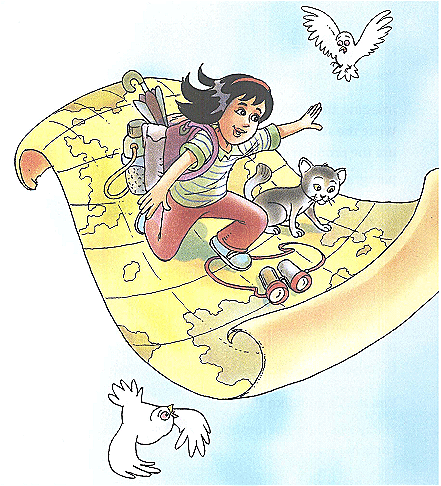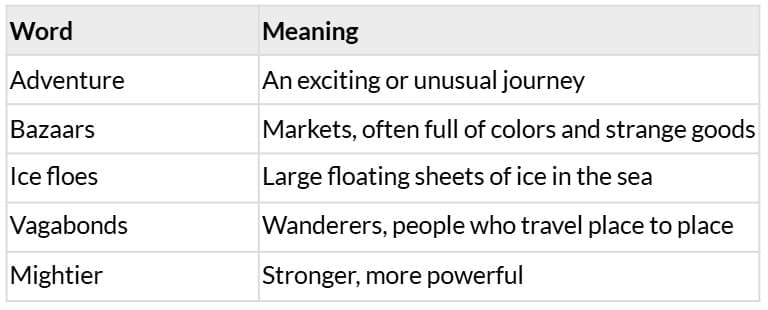Summary: Maps | Gul Mohar Class 7 PDF Download
| Table of contents |

|
| About the Poet |

|
| Detailed Summary (Stanza-by-Stanza Explanation) |

|
| Moral / Message |

|
| Vocabulary Table |

|
About the Poet
Dorothy Brown Thompson was a poet who wrote simple and imaginative poems for children. Her works often show how ordinary things can become magical through imagination. She used playful language and vivid images to spark wonder in readers.
Detailed Summary (Stanza-by-Stanza Explanation)
Stanza 1
High adventure
And bright dream
Maps are mightier
Than they seem:
Explanation:
The poet begins by saying that maps are filled with adventure and dreams. They are not just pieces of paper with lines and symbols but hold greater power. They help us imagine journeys, discoveries, and exciting places.

Stanza 2
Ships that follow
Leaning stars
Red and gold of
Strange bazaars:
Explanation:
Maps take us to distant lands where ships sail under the stars and to colorful, lively bazaars filled with red and gold. The stanza shows the magic of faraway places that we can explore through maps.
Stanza 3
Ice floes hid
Beyond all knowing
Planes that ride where
Winds are blowing!
Explanation:
Maps guide us even to mysterious and unknown places. They show icy seas with hidden ice floes and the skies where planes fly with the winds. This stanza shows that maps can open doors to even the most distant and hidden parts of the world.
Stanza 4
Train maps, maps of
Wind and weather,
Road maps – taken
Altogether
Explanation:
The poet reminds us that there are many different types of maps—train maps, weather maps, and road maps. Each has its own purpose, but together they give us a complete picture of travel and exploration.
Stanza 5
Maps are really
Magic wands
For home-staying
Vagabonds!
Explanation:
In the final stanza, the poet says maps are like magic wands. Even people who cannot travel can use them to imagine faraway lands. Maps give wings to our thoughts, making us wanderers (vagabonds) without leaving home.
Moral / Message
The poem teaches us that maps are not just tools for travel but sources of imagination and adventure. They allow us to dream about unknown lands, seas, and skies. Maps show that even if we cannot travel physically, we can still explore the world through curiosity, imagination, and knowledge.
Vocabulary Table

FAQs on Summary: Maps - Gul Mohar Class 7
| 1. What is the main theme of the poem? |  |
| 2. Can you explain the significance of the poet's style? |  |
| 3. What moral or message does the poem convey? |  |
| 4. How does the structure of the poem contribute to its meaning? |  |
| 5. What literary devices are prominently used in the poem? |  |















